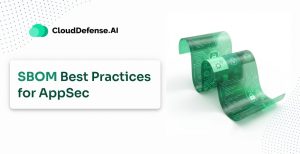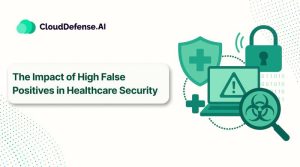What Is Cloud Encryption?
Cloud encryption is a robust data security method where plaintext information is converted into unreadable ciphertext to protect it within or between cloud environments. This process ensures that sensitive data remains protected, whether in transit or at rest, making it one of the most effective ways to maintain data privacy.
The cloud’s key advantage is its ability to provide anywhere, anytime access to applications and data. However, this convenience often involves handling sensitive information, necessitating strong security measures. Cloud encryption plays a vital role in protecting data from unauthorized access and cyberattacks, ensuring that your information remains secure.
How Does Cloud Encryption Work?
Cloud encryption secures data by transforming readable plaintext into unreadable ciphertext using advanced encryption algorithms and keys. This process ensures that data remains protected during transmission over the internet or while stored in the cloud.
When data is encrypted, it becomes inaccessible to unauthorized parties, even if intercepted. Only those with the appropriate decryption key can restore the ciphertext to its original, readable form.
Cloud encryption operates in two critical states:
- Data in Transit: Protecting data as it moves over networks, safeguarding it from interception or tampering.
- Data at Rest: Securing stored data in cloud environments, preventing unauthorized access to sensitive information.
Modern cloud encryption platforms smoothly integrate with cloud applications and storage systems. They encrypt data during upload, transmission, and storage, ensuring end-to-end protection. This approach guarantees the confidentiality and integrity of your data and provides security across diverse cloud environments.
Key Methods Used by Organizations in Cloud Encryption
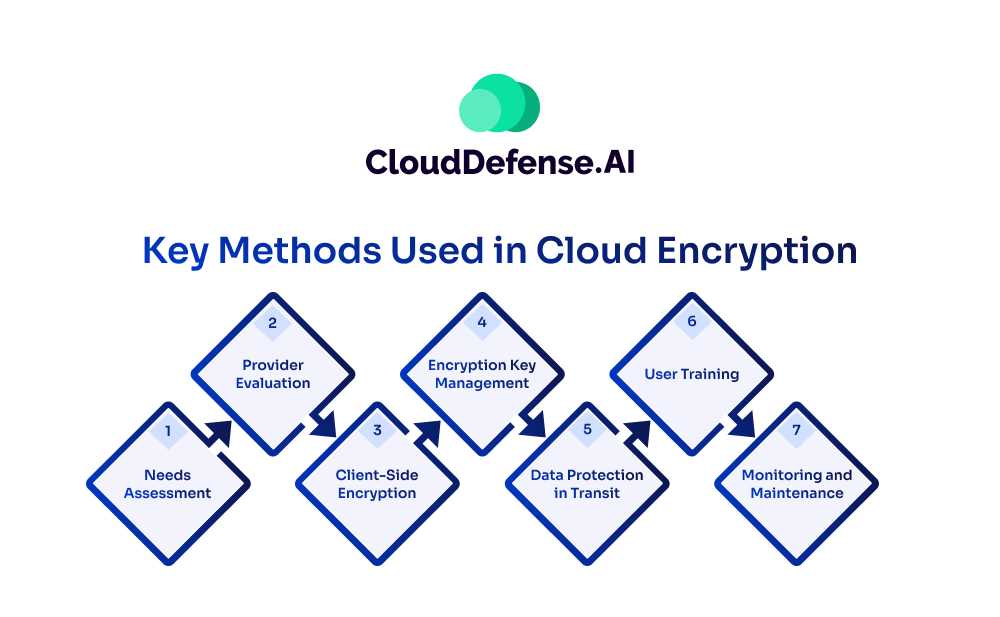
Implementing and maintaining effective cloud encryption involves a series of strategic steps to ensure data remains secure throughout its lifecycle. Here’s a comprehensive process organizations can follow:
Assess Data Sensitivity and Security Needs
Begin by identifying the types of sensitive data your organization handles and evaluating the level of protection required for both data in transit and at rest. This assessment guides the encryption strategy and ensures alignment with compliance requirements.
Select the Right Encryption Solution
Research and evaluate cloud encryption providers based on factors such as compatibility, scalability, and security features. Ensure the chosen solution meets your organization’s specific needs and integrates seamlessly with your existing infrastructure.
Deploy Client-Side Encryption
Implement client-side encryption to secure data before it leaves your network. This step ensures that data is encrypted before being transmitted to the cloud, protecting it from potential threats during transit.
Implement Key Management Practices
Secure encryption keys with stringent key management protocols. This involves using hardware security modules (HSMs) or key management services (KMS) to generate, store, and rotate keys securely.
Ensure Data-in-Transit Protection
Protect data as it moves between your organization and the cloud provider by using protocols such as TLS (Transport Layer Security). This step prevents interception and unauthorized access during transmission.
Train Employees on Cloud Encryption Practices
Educate your workforce on the proper use of cloud encryption tools and the importance of following security protocols. Regular training helps minimize risks stemming from human error or negligence.
Monitor and Maintain Encryption Systems
Continuously monitor encryption systems to ensure they remain effective against emerging threats. Regularly test, update, and audit encryption practices to keep pace with technological advancements and maintain compliance.
Benefits of Cloud Encryption
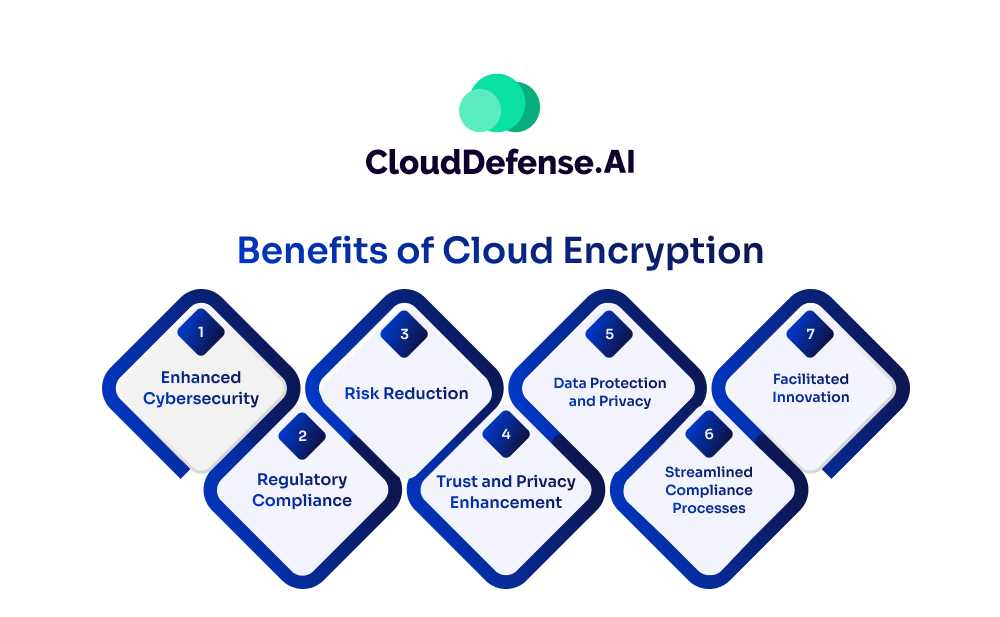
Cloud encryption offers a range of critical advantages, making it an essential component of any robust data security strategy. Here are the key benefits:
Enhanced Cybersecurity
By encrypting data both in transit and at rest, cloud encryption protects sensitive information from unauthorized access, reducing the risk of compromise across cloud environments and end-user devices.
Improved Regulatory Compliance
Many regulatory frameworks, including HIPAA, PCI DSS, and FIPS, mandate encryption as a core requirement. Cloud encryption helps organizations meet these standards, avoiding penalties and ensuring compliance with industry-specific regulations.
Reduced Risk of Disclosure During Breaches
In the event of a data breach, encrypted data remains unreadable to attackers. This added layer of protection may exempt organizations from mandatory breach disclosures, minimizing reputational damage and legal exposure.
Strengthened Privacy and Trust
Demonstrating a commitment to data privacy through encryption can build trust among customers, partners, and stakeholders. It reinforces the perception that your organization prioritizes secure and ethical data handling practices.
Cloud encryption not only protects sensitive data but also empowers organizations to operate with greater confidence, ensuring that security, compliance, and trust remain integral to their digital transformation journey.
Cloud Encryption Challenges
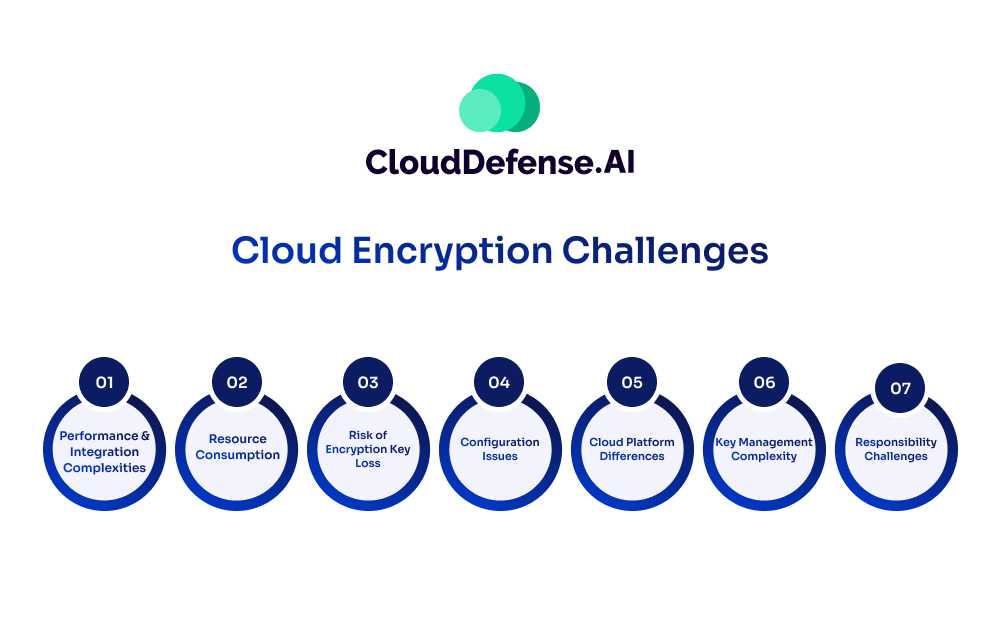
Cloud encryption presents several challenges for both data managers and cloud service providers. These challenges include:
1. Performance and Integration Complexities
Implementing encryption can be complex, particularly concerning integration with existing systems and user accessibility. While modern systems are more user-friendly, ensuring seamless integration and usability remains crucial.
2. Resource Consumption
Encryption processes are resource-intensive, potentially impacting system performance and requiring additional time and financial investment. Monitoring resource usage levels is essential to mitigate any adverse effects.
3. Risk of Encryption Key Loss
Loss of encryption keys can render encrypted data inaccessible. Inadequate key management practices pose a significant risk to critical data security.
4. Configuration Issues
Correctly configuring cloud encryption services is challenging and essential for effective data protection. Misconfigurations may leave data unencrypted and vulnerable, posing a significant security risk.
5. Cloud Platform Differences
Variations in cloud platforms (IaaS, PaaS, SaaS) complicate encryption approaches, making it challenging for providers to maintain and perform various encryption processes across different models.
6. Key Management Complexity
Key management is intricate and crucial for protecting encryption keys from loss or unauthorized access. Managing encryption keys is often a significant barrier to encryption implementation.
7. Responsibility Challenges
CSPs and cloud consumers share responsibility for data encryption. Effective encryption management must overcome challenges such as financial expenses and communication barriers.
Cloud Encryption Best Practices
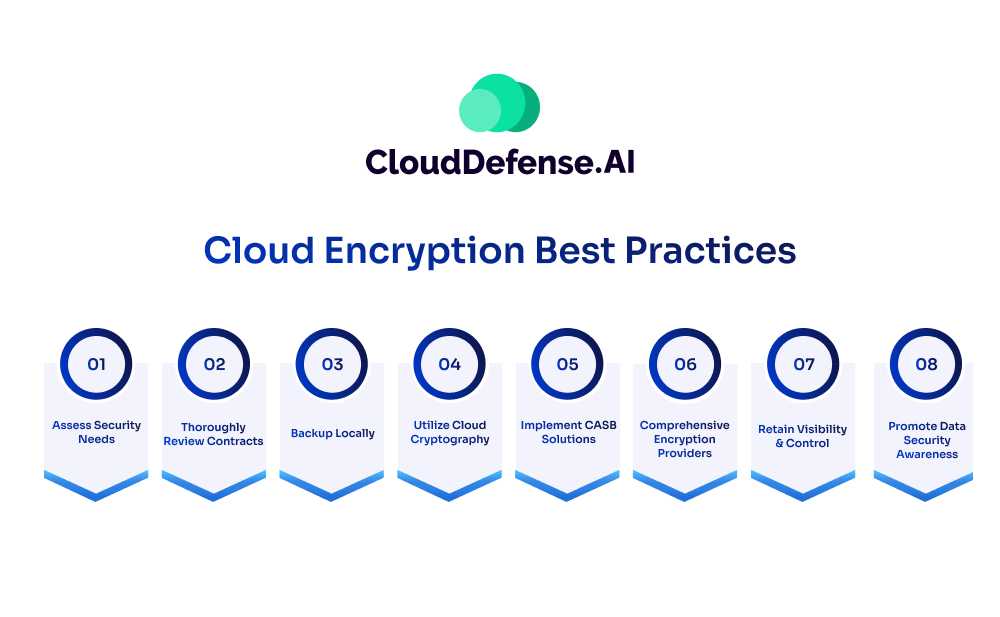
Cloud encryption is integral for protecting sensitive data in cloud environments. Here are key best practices for effective cloud encryption management.
1. Assess Security Needs
Identify sensitive data and prioritize encryption. Choose cloud encryption providers with strong authentication measures.
2. Thoroughly Review Contracts
Scrutinize user agreements and SLAs. Ensure compliance with privacy policies and regulations.
3. Backup Locally
Maintain local backups of critical data alongside cloud storage to ensure continuity in case of cloud service disruptions.
4. Utilize Cloud Cryptography
Employ cloud cryptography solutions for enhanced privacy and secure access to shared cloud resources.
5. Implement CASB Solutions
CASBs enable secure connections, enhance visibility, and enforce data protection policies.
6. Select Comprehensive Encryption Providers
Choose providers offering encryption at the local level and protection for data in transit from the end-user level.
7. Retain Visibility and Control
Ensure complete visibility into data storage, processing, and access. Monitor changes in security configurations and comply with regulations.
8. Promote Data Security Awareness
Educate employees on data security best practices, including avoiding public computers and insecure connections.
Conclusion
Enabling end users with security awareness training emerges as an important best practice in strengthening an organization’s cloud environment. By building a culture of vigilance and equipping stakeholders with the knowledge to identify and minimize cybersecurity threats, businesses can significantly enhance their resilience against potential breaches.
From recognizing malware to sabotaging phishing attempts, heightened awareness among all individuals accessing company systems serves as a potent defense mechanism. Through specialized certification and targeted training initiatives, organizations can cultivate a strong line of defense, ensuring the protection of sensitive data in an increasingly hazardous cyber industry.

